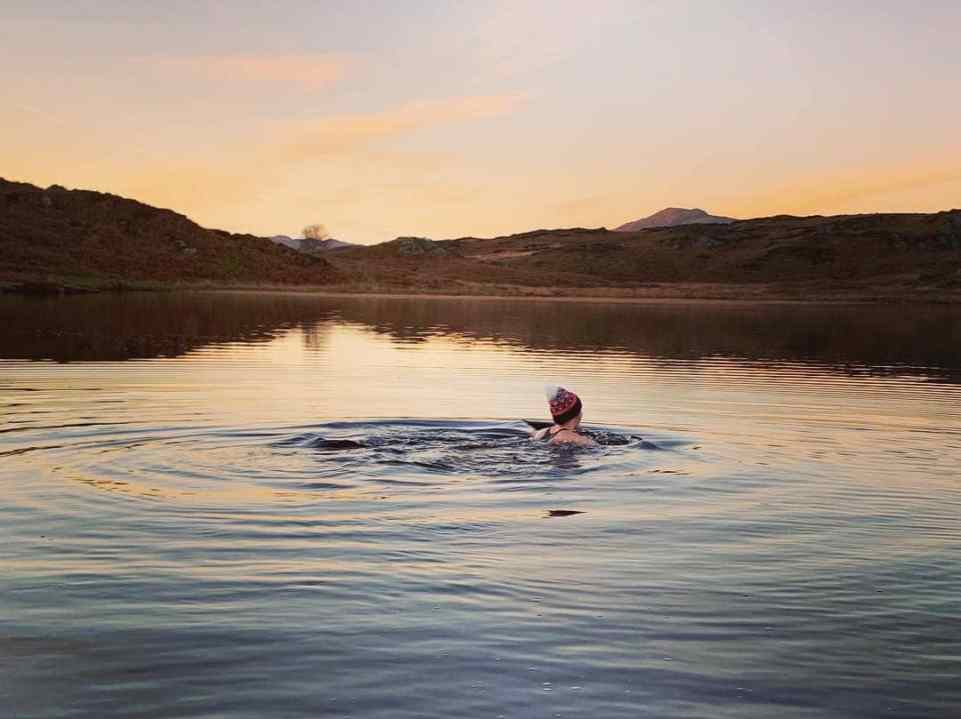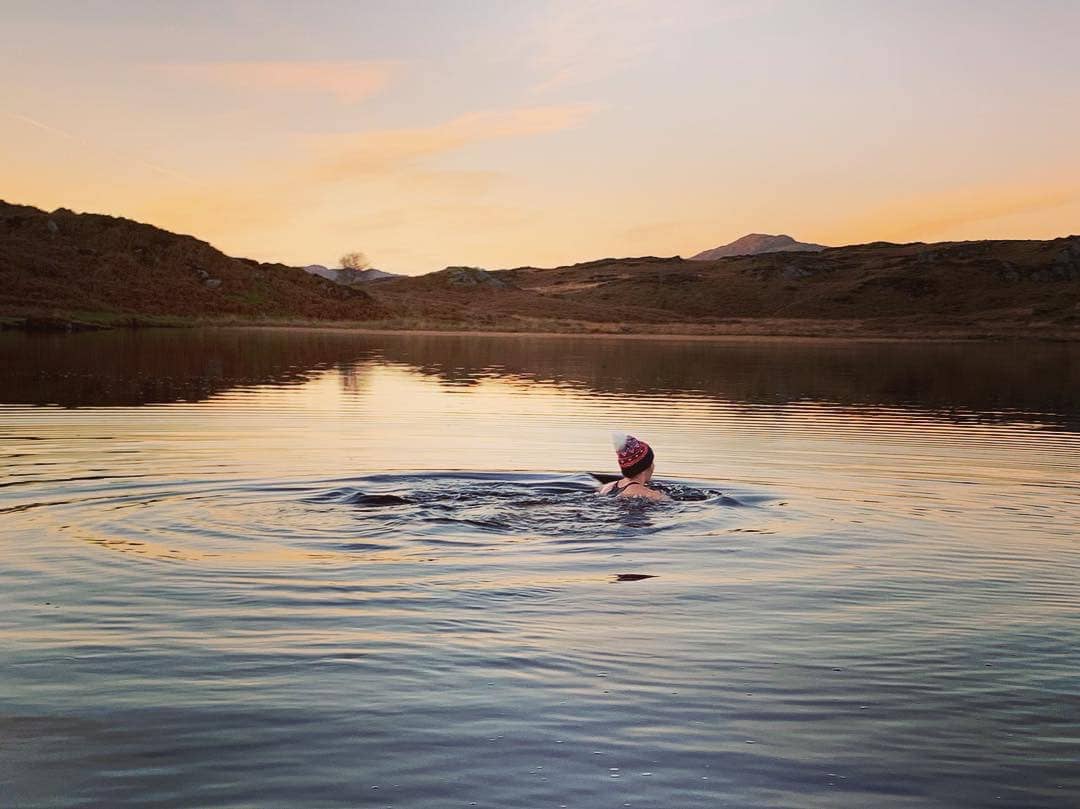Why can’t you swim in reservoirs? They look so cool and inviting and are often the only open bodies of water available in certain parts of the country. And yet swimming is prohibited in the majority of them. The answer usually offered is that they are dangerous, cold, deep, that there are underwater structures and machines that could injure you or suck you under the water.
The strange thing is that this answer only applies in England and Wales, not Scotland, where reservoir swimming is common. Access to inland waters in Scotland is enshrined by law: my local group in West Lothian is full of dippers chatting about their adventures in the nearby reservoirs in the Pentland Hills and beyond. They swap tips on access points, currents and so on – just as they do when discussing a dip in the Forth or our local lakes and lochs.
It is generally accepted in Scotland that you swim at your own risk: the Scottish Outdoor Access Code, published in 2005, explains that ‘there is a longstanding legal principle called “volenti non fit injuria” which means that a person taking access will generally be held to have accepted any obvious risks or risks which are inherent in the activities they are undertaking’. It advises swimmers that they should never go close to spillways and water intakes. Landowners are instructed to highlight unusual dangers such as underwater machinery or air curtains (the release of millions of air bubbles to improve water quality, which creates a negative buoyancy and makes it difficult for anyone to stay above water).
All open-water swimming spots have potential dangers. The old clay pit where I dip regularly is deep and cold and has a submerged car somewhere below the water. The sea tends to be warmer than inland spots, but even experienced swimmers can be flummoxed by rip tides and bad weather. In England and Wales, meanwhile, most reservoirs have signs banning swimmers on the basis that they’re allegedly too dangerous, even though the Scottish experience suggests that this isn’t true. The argument that many landowners, including the water companies that manage reservoirs, make is that they might be held liable for a drowning.
Campaigners are pushing for a change from this default ban to a more responsible approach. They point out that the majority of drownings involve people who never intended to be in the water at all, rather than because they had gone for a swim. Cold water shock and hypothermia are risks and do claim lives – but then all outdoor pursuits have risks attached and there is no great push to ban cycling or indeed horse-riding because accidents can happen. There is also a clear risk at the moment of people just not believing the signs claiming that the reservoir is too dangerous, and swimming anyway, but without proper understanding of the hazards that really exist. Where swimming is allowed, local groups tend to spring up which encourage responsible behaviour and organise group events where beginners can try out the cold water safely.
The Outdoor Swimming Society Inland Access Group has been trying to open up more spots for public swimming, with a few successes over the years. Its argument is that the rise in popularity in the sport means that existing inland spots are under pressure that is now in some cases unsustainable. The more perfectly good reservoirs and lakes that drop their unreasonable bans in favour of a more measured approach where the real risks are highlighted, the less likely that crowds will overwhelm just a few locations and damage the local wildlife and infrastructure.
One of the reasons outdoor swimmers are so passionate about their sport is that it has so many health benefits, particularly for mental health. As the evidence grows for the positive impact that cold water immersion can have on some mental illnesses, so should our society’s readiness to see open water as a health asset, rather than private property to be guarded from pesky interlopers. But the OSS also believes that people are more likely to look after things when they can attach a personal value to them, such as an addiction to swimming in the cool waters of a reservoir. Landowners might find that they benefit from opening up just as much as the people who get a chance for a dip.







Comments